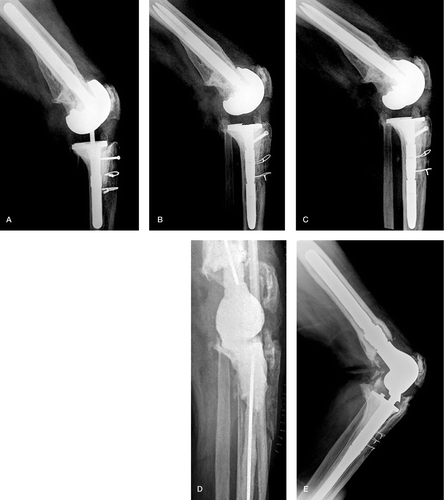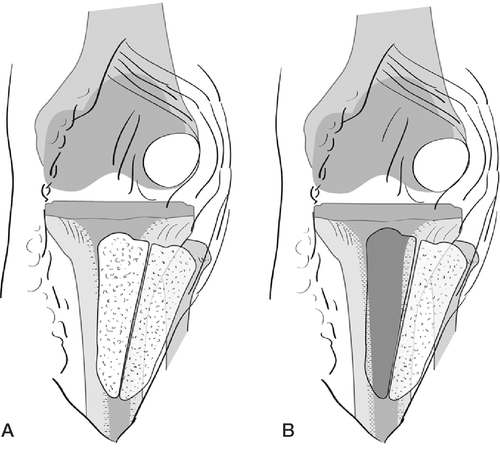Figures & data
Figure 1. 3 TTOs on the same knee. A. Healed primary TTO in a 57-year-old man who underwent RTKA of the left knee. A bicortical screw proximally and 2 wires distally were used for osteotomy fixation. B. 4 years later, implant loosening and instability developed, and another RTKA with a second TTO was performed. Fixation of the osteotomy was achieved with the same osteosynthesis method as the previous TTO. C. Complete consolidation of the osteotomized fragment was seen radiographically 6 months postoperatively. D. 2 years later, knee infection occurred. The implants were removed and an articulated antibiotic-impregnated cement spacer was inserted. A third TTO was performed during removal of the infected TKA and antibiotic cement spacer implantation. The osteotomy was left unfixed to avoid introduction of metallic fixation into a contaminated wound. E. Fixation of the osteotomy with 3 wires was performed during the second stage of RTKA. At the final follow-up 2 years postoperatively, the tibial tubercle was well healed.

Figure 2. Intramedullary and extramedullary TTO A. Diagram illustrating a TTO elevated in a medial to lateral fashion. The anterior compartment muscles as well as the patellar tendon and patella are attached to the osteotomized bone fragment. The osteotomy is performed through the metaphyseal bone anterior to the tibial intramedullary canal, exposing cancellous bone on both sides of the osteotomy. B. Diagram illustrating extension of the osteotomy into the intramedullary canal to facilitate tibial stem and cement removal. Cancellous bone has been removed from the proximal tibia to expose the intramedullary canal.

Table 1. Improvement in knee motion. Values are median (range).
Table 2. Knee extensor lag and flexion contracture. Values are numbers of knees.